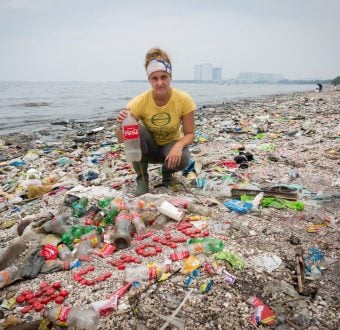“If dioxins were an intentionally produced chemicals they would
be subject to an immediate ban or phase out by the EPA,” said Rick
Hind of Greenpeace.
Dioxin is a by-product of manufacturing and burning chlorinated
materials such as polyvinyl chloride plastics (PVC) and chlorine
bleached paper.
Based on more than 20 years of investigations and studies, the
major sources of dioxin are catalogued in the EPA report, which has
been in preparation for nine years.
Key elements of a Dioxin Emergency Action Plan would start with
the:
- Elimination of the incineration of solid waste, medical
material and hazardous waste, - Phase out the manufacture of polyvinyl chloride plastic,
- Elimination of the use of hazardous waste as fuel in cement
kilns, - Use of totally chlorine-free processes for pulp and paper
manufacture, and a - Ban on dioxin contaminated pesticides.
While the EPA report is dire news for every American, a number
of communities, locally and globally, are already in a state of
emergency, living in chronic exposure to dioxin.
- Lake Charles, Louisiana – home of several vinyl chloride and
chlorine factories. Dioxin levels in Mossville residents’ blood are
three times the national average. - East Liverpool, Ohio- the WTI hazardous waste incinerator
operates 1,100 feet from an elementary school. Higher than average
levels of cancer plague the community. - Alaska – although far from the chemical industry, dioxin
migrates to colder climates. Native Americans traditional diets are
often highly contaminated with dioxin.
Greenpeace noted that the US currently has a unique opportunity
to lead international policy on dioxin. The State Department is
currently negotiating a United Nations treaty that would globally
ban the worst poisons on the planet. Dioxin is on a list of 12
chemicals under discussion for a global ban.
“With the EPA dioxin report on its heels, the US should lead the
global effort to rid the planet of one of the most toxic poisons
known,” said Hind. The EPA must prioritize dioxin prevention as
part of the ‘cure’, as it led the way internationally for a ban on
leaded gasoline.”
Read excerpts from the EPA’s Dioxin Reassessment:
Draft Exposure and Human Health Reassessment of
2,3,7,8-Tetrachlorodibenzo-p-Dioxin(TCDD) and Related
Compounds
All chapters available at the EPA’s Website at http://www.epa.gov/ncea/pdfs/dioxin/dioxreass.htm

